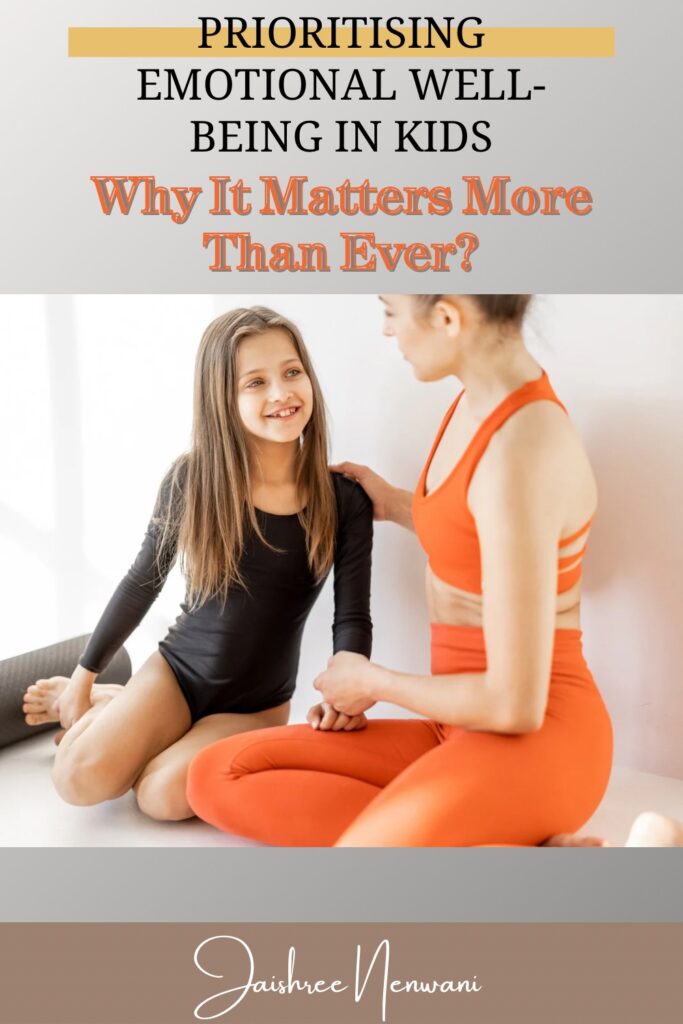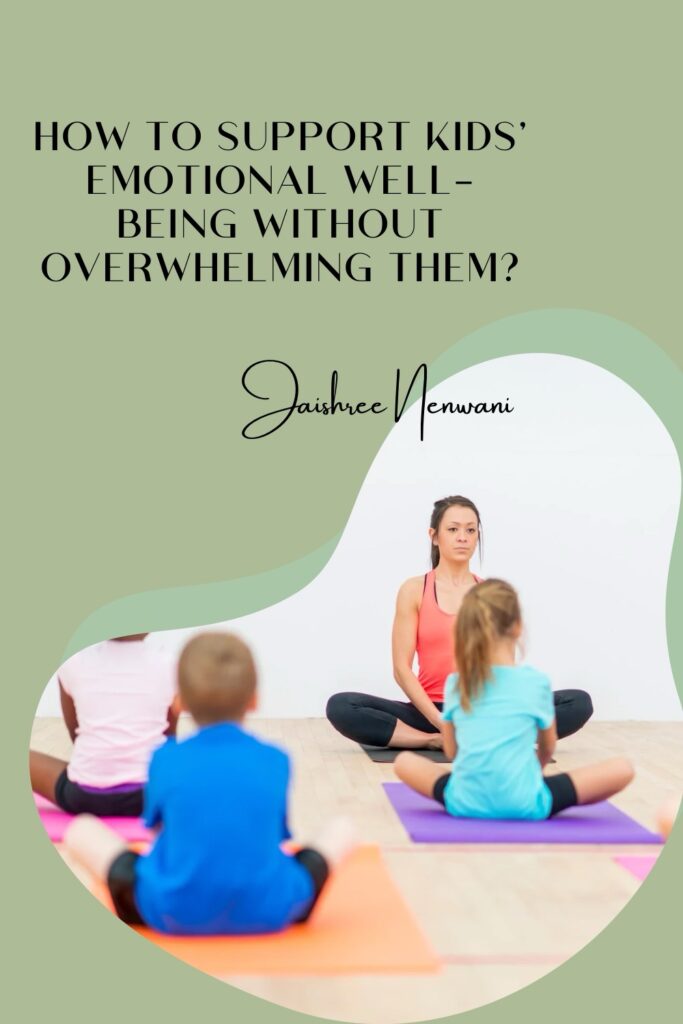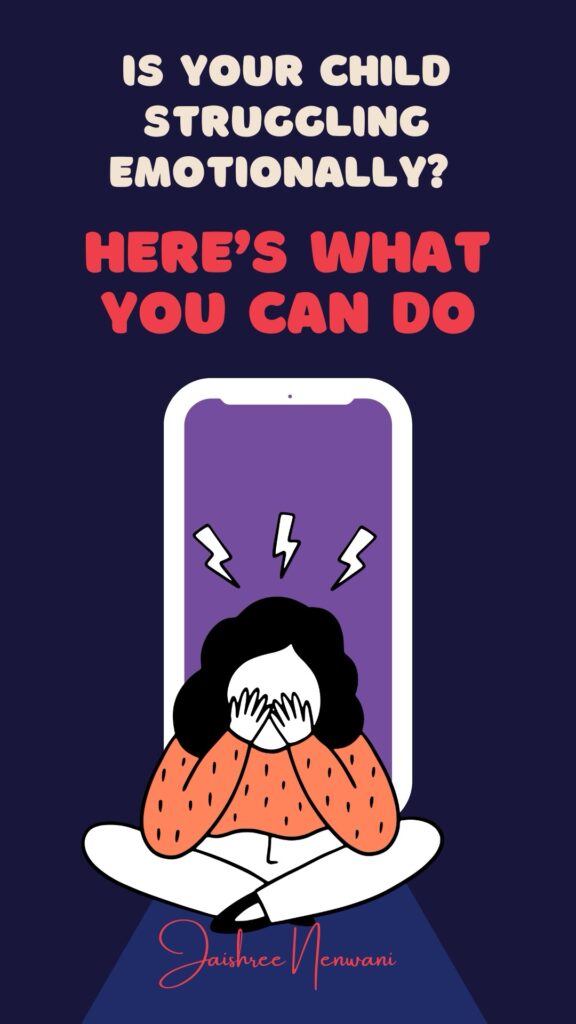As a long-term meditation practitioner who values personal growth and healing, I’ve often spoken about emotional well-being. But lately, I’ve found myself thinking about a much younger audience—the children. In a world that feels like it’s moving faster than ever, with distractions at every corner and expectations piling up, I can’t help but wonder: are we doing enough to support the emotional well being of kids?
We plan meals for them, monitor screen time, sign them up for classes, and help with homework. But what about their emotional world? Their invisible inner landscape—the thoughts, feelings, and fears they may not yet have the words to express?
This is why I believe prioritizing emotional well-being in kids isn’t just important—it’s essential. And thankfully, there are now beautiful tools to help us do just that, like Tiny Moments of Peace – Meditations for Kids by Tiny Totz Kidz.
Why Emotional Well-Being Deserves Our Attention?


Emotional well-being in children refers to their ability to understand, express, and manage emotions in a healthy way. When kids feel emotionally safe and supported, they’re more likely to thrive in every other area—academically, socially, and even physically.
Yet so often, emotional development takes a back seat to more visible milestones. We notice when a child learns to read or ride a bike, but what about when they learn to name their feelings, regulate their breathing, or ask for help when they’re overwhelmed?
These are powerful, lifelong skills—and the earlier they’re nurtured, the better.
The Modern Child’s Emotional Landscape
Today’s kids are growing up in a world of overstimulation. From mentally draining media to packed schedules, many children are constantly on “on.” Mode. There’s little time for stillness, for boredom, for reflection. And without moments of calm, it’s hard for kids to process their emotions, let alone grow from them.
Add to this the emotional impact of things like social comparison, academic pressure, and global uncertainty, and it becomes clear: that children need support in processing their feelings. They need gentle ways to slow down and feel safe within themselves.
Tiny Moments That Make a Big Difference


This is where the concept of Tiny Moments of Peace becomes so meaningful. I am not talking about hour-long meditation sessions or formal therapy. I am talking about short, accessible, heartfelt practices that help children pause, breathe, and reconnect.
The Tiny Moments of Peace – Meditations for Kids album is a beautiful example of this. Created with love and mindfulness, it offers kids guided meditations and calming music designed specifically for their age and emotional needs.
Even just a few minutes a day of this kind of intentional stillness can:
- Lower anxiety and restlessness
- Improve sleep quality
- Help children manage big feelings
- Build emotional vocabulary
- Foster a deeper sense of inner calm
As a teacher, caregiver, or advocate for children’s well-being, it’s comforting to know that support doesn’t have to be complicated. It can be as simple as pressing play.
How I See Emotional Well-Being Becoming Part of Everyday Life?
Conversations about emotions are becoming more open—at home, in classrooms, and in online communities. We’re beginning to create space for the full spectrum of human experience, even in our youngest ones. I believe that little practices—like winding down with soft music or learning to label emotions—can ripple out into big changes.
We talk more about feelings now. Not just the happy ones, but the hard ones—anger, frustration, sadness. I’ve learned that giving space to those emotions doesn’t make them bigger. It helps children feel seen, safe, and supported.
How You Can Begin?
If this idea resonates with you, start small. Here are a few simple ways to prioritize a child’s emotional well-being:
- Create a daily check-in: Ask how they’re feeling—not just what they did.
- Introduce a short mindful break: Use a track from Tiny Moments of Peace as a transition between activities.
- Encourage emotional expression through art or journaling.
- Build a calm-down corner: A cozy space they can retreat to when they feel overwhelmed.
And above all, model emotional awareness. Let the children in your life see that emotions are not problems to be fixed, but experiences to move through with kindness.
Final Thoughts on Prioritizing Emotional Well-Being in Kids


When we prioritize emotional well-being in kids, we’re planting seeds that will grow for a lifetime. We’re telling them, through our actions, that their feelings matter. That they matter.
Tools like Tiny Moments of Peace – Meditations for Kids are here to support that journey—for parents, for educators, and most importantly, for the children who are learning, day by day, to understand their inner world.
Because sometimes, all it takes is a tiny moment… to create a lasting sense of peace.




7 responses to “Prioritising Emotional Well-Being in Kids: Why It Matters More Than Ever?”
This has always been so important, but today’s world makes it even more so. There is so much out there that can just swallow our kids up if we don’t help give them the tools they need for their emotional health.
This is such an important topic to be aware of when you have children. Kids seem to pick up on everything and making sure that we are easing this will make it much easier for them
Thank you for sharing this with us. This is very important topic for everyone, I will share this with my family too.
This is amazing, thank you so so much for shedding light on such an important topic. Very helpful indeed. I love the idea of maintaining a checklist and being accountable, this is perfect.
Kiddos have big feelings! Their problems and worries are just as important to them as ours are to us.
Our children’s emotional wellbeing is something that we all need to consider and to keep an eye on. Teaching them to incorporate short sessions of meditation into their day from an early age is very helpful.
In the more recent years, children’s emotional health has been such a big topic. Thank you for this reminder on how to prioritize!